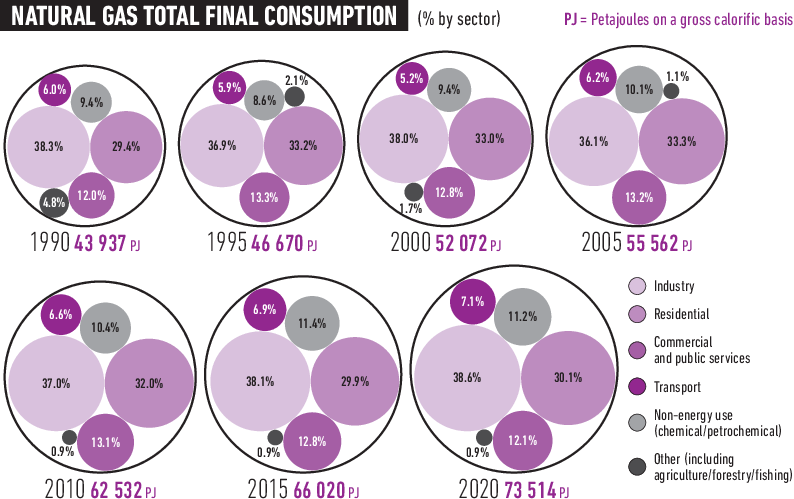Gas Consumption and Use
Versatility of use, transportation infrastructures and relatively contained emissions of pollutants make gas an energy resource whose consumption has constantly been on the rise since World War II.
Producer countries are also those with the highest levels of consumption, with the United States and Russia still at the top, which alone constitute a third of the total.
There are essentially two types of final uses for gas: an energy-related purpose (heat, production of electric energy, transportation) and non-energy-related. In the first, which takes up a majority of production, uses can be further divided into industrial, residential, commercial and for public services. In the second, gas is used as a component in the industrial processes of sectors like chemistry, petrochemistry and mining.
After coal, natural gas holds second place in the primary energy resources used for producing electric energy.
Nations such as Algeria and the United Arab Emirates, major producers of gas, fulfil almost entirely their domestic electric requirements with this resource, unlike most other countries, including China, India and France, where coal and nuclear power are still the most used resources.
In the commercial and residential sectors, gas is used for heating spaces and domestic water. Gas consumption in the industrial sector remains significant, despite a recent decline due to price volatility and the resulting decrease in production or partial shutdown in some heavy industries. The transport sector is gradually growing thanks to the recent use of LNG in heavy and maritime transport.
After a progressive increase, the current trend and future scenarios show great uncertainty and extreme volatility, influenced by recent global events. Pandemic and economic recovery, energy crisis and geopolitical tensions have rapidly changed the dynamics of the entire supply chain, impacting consumption patterns as well.
- EIA (US Energy Information Administration), International Energy Statistics [Last accessed 15 May 2023];
- IEA (International Energy Agency), Electricity Information 2022 • Gas Information 2022 Key World Energy Statistics (various editions) • World Energy Outlook 2022 ;
